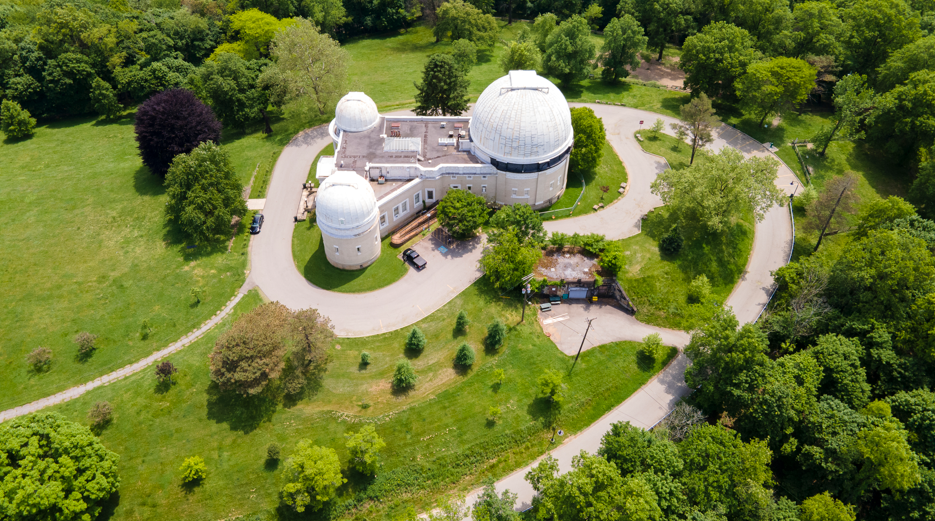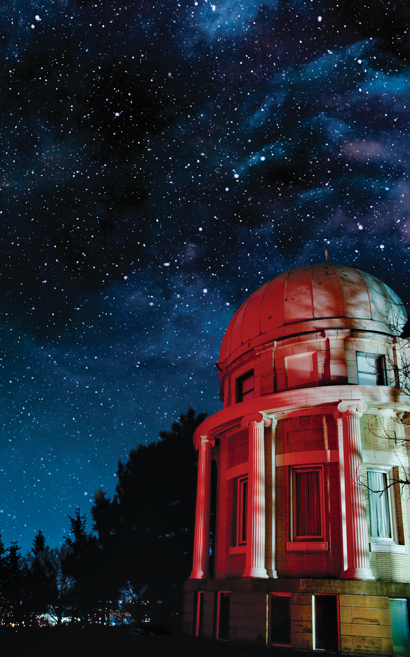The Allegheny Observatory, located in Riverview Park, is one of the world's major historical astronomical research institutions and was an initial pioneer in research in the United States. It also happens to be part of the Department of Physics and Astronomy in the Dietrich School.
The observatory was built between 1900 and 1912 and has since been added to the National Register of Historic Places for significant contributions to astrometry. It comprises three domes that house the three separate telescopes: The Thaw Memorial Refractor, the Keeler Telescope, and the Fitz/Clark Refractor. Only the Fitz/Clark Refractor is open to the public, but all three are open to student research and observatory astronomers who can use it to teach university classes.

Pitt offers a few undergraduate classes that utilize the Observatory: Astronomy 0086 and Astronomy 1263. Undergraduates can also participate in research with the STEPUP program. The STEPUP (Survey of Transiting Extrasolar Planets at the University of Pittsburgh) program consists of a team of student researchers led by Professor Michael Wood-Vasey. The research team uses the Keeler Telescope and the transit photometry method to detect exoplanets. This method consists of waiting for an exoplanet to pass between its parent star and Earth, and while you cannot see the planet, you can see the star dim which allows scientists to measure the exoplanet. Students working on this research have contributed to the Exoplanet Transit Database, an international catalog of transiting exoplanets that observers and researchers use. The STEPUP program has also joined the TESS Follow-up Observing Program (TFOP). This program allows them to do follow-up observations for the Transiting Exoplanet Survey Satellite mission to confirm TESS detections.
The Observatory does allow public access through tours and group programming. Tours run on Thursday and Friday nights in the summer, Friday nights in the spring, and Wednesday and Friday nights in the Fall. Tours can be booked through Eventbrite.


Schools and group tours for clubs, scouts, and the like can also book trips to the observatory during the day and evening. These tours include an activity, tour, and weather-dependent viewing. Daytime viewing allows visitors to see the sun, sunspots, and occasionally the moon and Venus. Visitors coming at night may be able to see Saturn, Jupiter, the moon, and star clusters. The observatory also runs children’s programming for Moon Days, Planet Parties, Haunted Space Mansion, and American Astronomer John Brashear’s Birthday.
Every third Friday of the month, except in December, the Observatory hosts a public lecture. You can join a free lecture, “Twists and Turns while Searching for Strange Stars,” this Friday, July 19 from 7-10 pm. The lecture will be hosted by Dr. Anna O’Grady who will talk about the scientific process as she researches supergiant stars that have swallowed neutron stars. Light refreshments will be provided, and a tour and weather-dependent viewing will follow the lecture. You can register for the event here.
You can also find a full list of upcoming lectures on their website.
